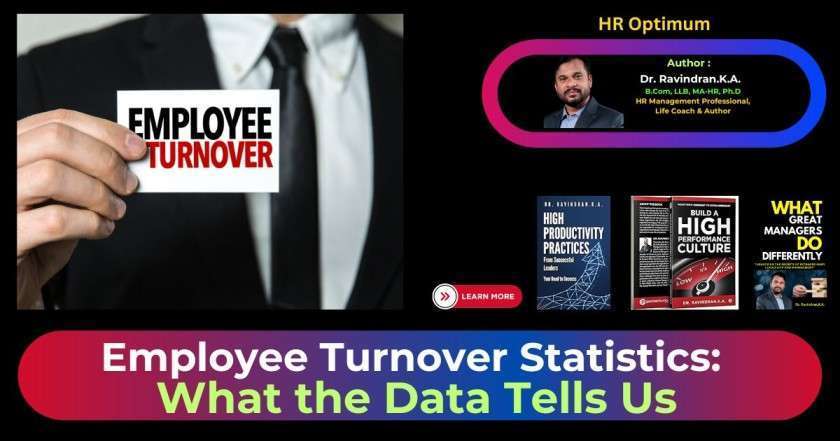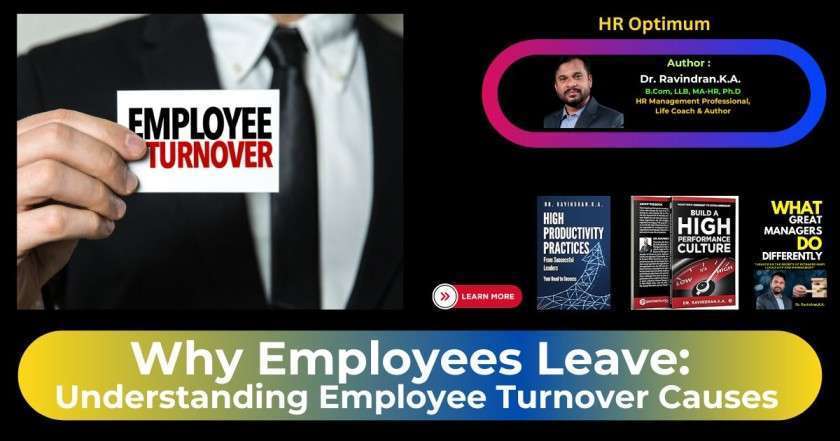Employee Turnover Formulas: How to Measure and Interpret Your Data
A recent study found that the average company loses about 18% of its workers each year. This shows how vital it is to understand employee turnover well. It affects a company’s reputation, hiring, and team morale. We’ll look into key formulas for measuring employee turnover. We’ll also show how to use this data to keep good employees and manage talent better.
Thank you for reading this post, don't forget to subscribe!Key Takeaways
- Measuring employee turnover is crucial for understanding workforce trends and developing targeted retention initiatives.
- Turnover rate formulas provide insights into the percentage of employees leaving a company over a specific period.
- Analyzing turnover data can help identify when and why employees are leaving, informing HR strategies to improve job satisfaction and engagement.
- Industry benchmarks offer a valuable reference point, but internal turnover analysis is essential for each unique organization.
- Leveraging workforce analytics and HR technology can streamline the process of calculating and interpreting employee turnover data.
Understanding Employee Turnover
What is Employee Turnover?
Employee turnover means how often people leave a job and are replaced. It includes both those who choose to leave and those who are let go. Knowing the difference between turnover, attrition, and churn helps us understand workforce trends better.
The U.S. Bureau of Labor Statistics says the average employee leaves a job every year, with a turnover rate of 12% to 15%. Different industries have different rates. For instance, the professional services sector sees a 13.4% turnover, while tech is at 12.9%.
The entertainment and hospitality sectors have an 11.8% turnover rate, and retail is at 11.4%.
In late 2021 and 2022, turnover hit a high during the Great Resignation. People were looking for better pay, more growth, or a better work environment. A SHRM report showed 74% left for poor pay.
Looking at turnover helps companies find out why people leave and how to keep good employees. High turnover might mean bad management or a poor work environment. Low turnover means employees are happy and HR is doing well.
To figure out the turnover rate, companies count how many employees start and end a period, and how many leave. Then, they divide the number of leavers by the average employees and multiply by 100 for a percentage.
Dealing with employee turnover is key for companies to keep a steady, productive team. It helps cut down on hiring and training costs. Plus, it makes the workplace better, drawing in and keeping great employees.
Calculating Employee Turnover Rate
Finding out the employee turnover rate is key to understanding your company’s workforce. It’s the number of employees who left the company during a time period divided by the total number at the start of that period.
To figure out the monthly turnover rate, count the employees who left in a month and divide by the total at the start of that month. For the annual turnover rate, do the same but for a year.
| Industry | Voluntary Turnover Rate |
|---|---|
| Hospitality | 17.8% |
| Healthcare | 14.2% |
| Insurance | 8.8% |
| Utilities | 6.1% |
Remember, compare your employee turnover rate to others in your industry. The right rate varies a lot based on the job and the competition.
By tracking your employee turnover rate, you can see how healthy your company is. You can find areas to get better and keep your great team.
Lowering employee turnover rates is key. High rates mean more costs, unhappy workers, bad brand image, and less work done. To fight this, hire people who fit your company, offer good pay, give regular feedback, and create a place where people can grow and develop.
Factors Influencing Employee Turnover
Employee turnover is complex, affected by many things like demographics, career stage, pay, and company culture. Knowing what drives turnover helps companies keep good employees.
Who Leaves?
Looking at who leaves can show us patterns. Men in their thirties often leave more than others. Their tenure and career goals also tell us why they leave.
People might leave on their own if they’re not happy or don’t have a good work-life balance. They might also leave if they want better career chances. Those who are forced out often have performance issues or the company changes.
When Do Employees Leave?
When people leave can tell us a lot. For example, more people leave during the holidays or right after reviews or bonuses. This suggests problems with pay, work-life balance, or how the company is run.
A study in Sri Lanka found that happy employees and good coworkers help keep people from leaving. But having a good relationship with leaders matters too. This study looked at 230 people and used a special model to understand the data.
| Metric | Value |
|---|---|
| Optimal employee turnover rate | 10% |
| Average employee turnover rate | 12-20% |
| Startups with revenue over LKR 10 Mn | 29% |
| Startups willing to expand staff in next year | 82% |
| Startups operating less than 1 year | 36% |
| Startups operating 1-3 years | 44% |
“A significant positive relationship was highlighted between male employees in their thirties and higher turnover rates.”
Interpreting Employee Turnover Data
Understanding employee turnover analysis is key to making smart decisions. By looking at turnover trends, companies can spot trouble spots. They can see which departments or groups are at higher risk of losing employees. This helps find the main reasons behind turnover risk.
Using people analytics and HR analytics gives a deeper look into why people leave. It helps spot patterns and predict who might leave next. This way, companies can act early to keep their team together.
Root cause analysis digs into why people leave, like not getting ahead or work-life balance issues. Predictive analysis uses past data to forecast who might leave soon. This helps plan ahead to keep employees happy and on board.
| Turnover Metric | Significance |
|---|---|
| Resignation Rate | Shows how many employees leave on their own, helping spot retention problems. |
| Involuntary Turnover Rate | Shows how many employees were fired or let go, pointing out management or operation issues. |
| Time to Fill Vacancies | Measures how long it takes to replace employees, affecting work flow and morale. |
| Cost of Turnover | Shows the money lost due to employee leaving, like hiring and training new ones. |
By using employee turnover data, companies can lower turnover risks. They can boost employee engagement and build a dedicated team. This leads to long-term success.
“More than 68% of employees who quit could have been retained with the right strategies in place.”
Employee Turnover and Retention Strategies
Understanding employee turnover helps companies make plans to keep their best workers happy and motivated. This means looking at things like pay, career growth, work-life balance, and company culture. By using what they learn from turnover data, companies can cut down on losing good workers, build a strong team, and grow their business over time.
Competitive Compensation and Benefits
Pay is key to keeping employees. Lattice’s SOPS report shows that over half of workers leave for better pay. Companies should pay well and keep an eye on salaries to stay competitive. Good benefits like health insurance and retirement plans also make workers happier and more likely to stay.
Enhancing Work-Life Balance
Flexible work and remote jobs make workers happier and help them balance work and life. In fact, 82% of workers would stick with their jobs more if they could work flexibly, says Flexjobs. By offering these options, companies can keep their teams happy and reduce turnover.
Fostering a Positive Organizational Culture
A great work culture comes from open talks, teamwork, and saying thanks. This makes workers feel good and loyal. Things like fun tasks, rewards, and new learning chances also make workers more productive and connected.
Investing in Career Development
Helping workers grow in their careers through training and mentorship makes them more engaged and loyal. Offering chances for career growth and learning keeps the best workers and builds a strong team.
By focusing on pay, work-life balance, culture, and career growth, companies can lower turnover, keep a skilled team, and succeed in the long run.
| Retention Strategy | Key Benefits |
|---|---|
| Competitive Compensation and Benefits |
|
| Enhancing Work-Life Balance |
|
| Fostering a Positive Organizational Culture |
|
| Investing in Career Development |
|
“Companies with a purpose-driven mission see 49% lower attrition rates according to LinkedIn.”
Using what they learn from turnover data, companies can cut down on losing good workers, build a strong team, and grow their business over time.
Conclusion
Understanding employee turnover is key to managing talent and planning for the workforce. By using important formulas and analyzing why people leave, companies can spot problems. They can find the main reasons for turnover and make plans to keep good employees.
This approach helps HR experts and leaders make smart choices. It helps them manage their teams better and aim for long-term success. In fields like hospitality, retail, equipment, and textiles, keeping an eye on turnover rates is crucial. Companies need to have strategies to keep their employees.
Keeping a good balance in turnover shows how healthy a company’s workforce is. It helps find areas to get better and keeps the best talent around. Knowing about employee turnover and how to understand its data gives companies an edge in today’s fast-changing business world.
FAQ
What is employee turnover?
Employee turnover means how often people leave a job and are replaced. It can happen for reasons the employee chooses or because they were let go.
How do I calculate the employee turnover rate?
To find the employee turnover rate, count how many left during a certain time. Then, divide that by the total number of employees at the start of that time. You can use this for any time period like a month, quarter, or year.
What factors influence employee turnover?
Many things affect why people leave a job. This includes things like who they are, where they are in their career, how much they make, and the work culture. Knowing who leaves and why helps understand the issue better.
How can I interpret employee turnover data?
It’s key to understand employee turnover data well. This helps make smart plans to keep employees. By looking at trends, we can spot problems, find out why people leave, and see how it affects the company’s money.
How can I develop effective employee retention strategies?
Knowing about employee turnover helps make plans to keep good workers. This might mean looking at pay and benefits, offering more career growth, helping with work-life balance, and making the workplace a better place to be.
 hroptimum
hroptimum






